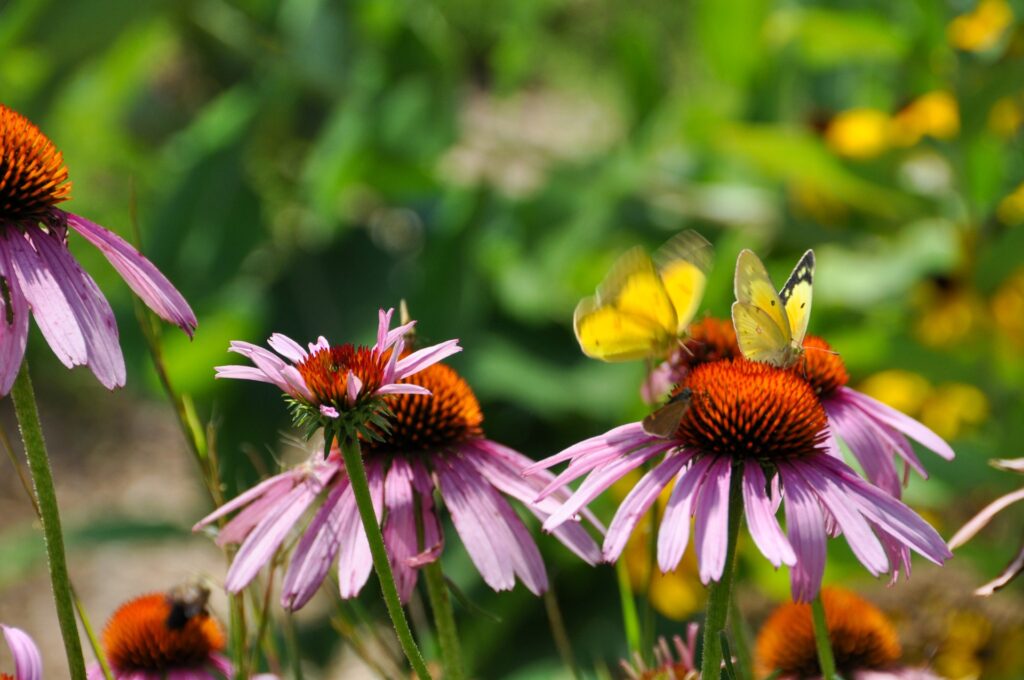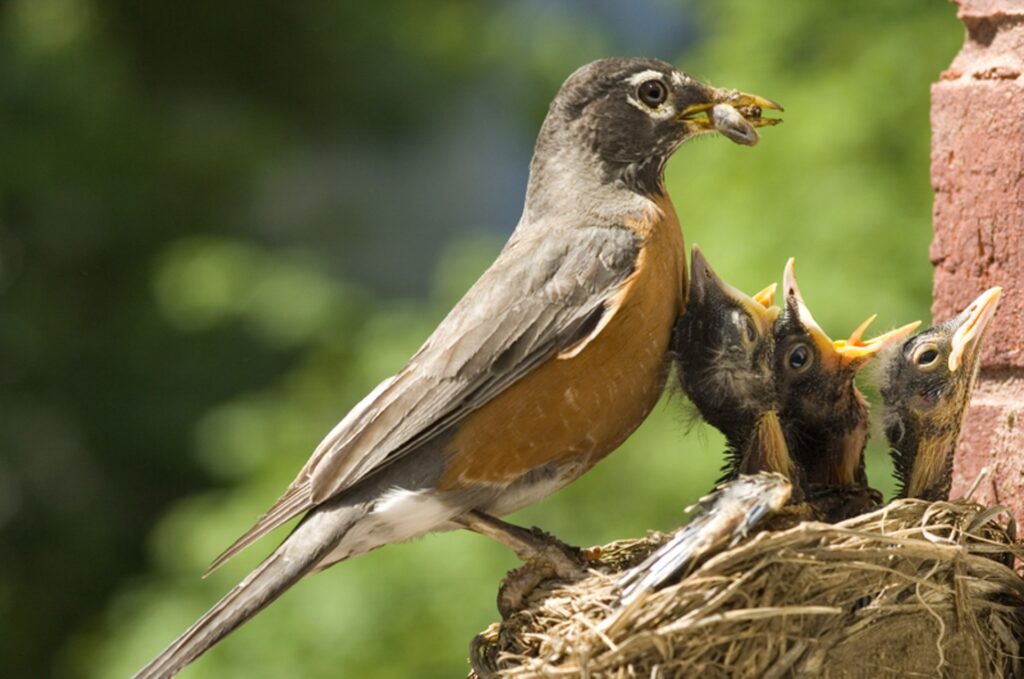
After what seemed like an endless summer, I think that fall has finally arrived. The temperatures are dropping, the mornings and evenings have a chill and the trees are sporting the gorgeous reds, oranges and golds of autumn. And, at least in my neighborhood, the leaf blowers are out in full force. Soon, there will be countless bags of leaves sitting at the curb just waiting to be hauled off to the landfill.
The latest available figures from the Environmental Protection Agency show that annually, over !0 million tons of yard waste are deposited in landfills. In our state (Missouri), yard waste accounts for 20% of the waste stream. Other states show similar patterns. More important than simply adding to the amount of waste in landfills, leaves and other yard debris eventually break down into methane gas which is 80 times more potent than CO2 at trapping heat and contributing to our rapidly changing climate.
This year, instead of blowing, bagging and hauling leaves off to the local landfill, consider some alternative solutions that will benefit both your landscape and the local ecosystem.
- As you do your final mowings of the season, chop fallen leaves into small pieces. Allow them to naturally decompose in place, which will enrich the soil and give a boost to the lawn next spring. Research at The University of Minnesota has shown that mulched maple leaves reduce weed seed germination in the spring. Mulched leaves from oak, honey locust and white birch add a significant amount of nitrogen to lawns.
- Placing piles of shredded leaves underneath trees, around shrubs and in flower beds is an excellent way to provide your plants protection from the elements in winter and to help maintain critical moisture levels throughout the winter season. In spring, the rotted leaves can be turned into the soil, adding desirable organic matter. For most trees and shrubs, a 3 to 6 inch lawyer is sufficient, being careful not to mound the mulch up against the plants’ trunks. For ornamental flower beds, 2 to 3 inches is recommended. If you mulch beds of native plants, be careful not to over-mulch. Too much mulch, more than a scant two inches, is likely to smother the plants.
- Start a compost pile. First, shred fallen leaves, then place them in a compost bin with a nitrogen source such as grass clipping. Keep the pile moist and turn occasionally. Eventually, you will have a load of rich soil to add to your garden. The EPA has a comprehensive guide to composting at https://www.epa.gov/recycle/composting-home which includes charts of both what to add and what not to add to your compost pile.
- Another option for fall leaves is to physically move them to areas of the yard where they can lie undisturbed throughout the winter. The fallen, slightly chaotic and somewhat messy piles of leaves we see lying on a forest floor are actually parts of complex ecosystems that wildlife needs in order to survive. When we recreate even small portions of the forest floor within our own yards, we are helping to rebuild habitat that had been lost as a result of human development.

Pollinator gardens filled with the plants that visiting butterflies and moths need have become a popular addition to the landscape. The gardens supply nectar filled flowers on which the pollinators feed and varieties of plants so that their caterpillars have enough of the right kind of leaves to munch. What people may not realize is that a majority of those same butterfly and moth species do not migrate, but spend the winter as pupae, caterpillars or adults hidden in layers of fallen leaves. As early spring arrives, the bed of leaves even becomes a first food supply for some varieties like the red-banded hairstreak.butterfly. Without safe piles of leaves and debris throughout the winter months, generations of butterflies and moths are lost each year.

Insects, especially invertebrates like the caterpillar stage of butterflies and moths, make up 96% of the diet of our backyard songbirds. Baby birds that hatch in the early spring rely on these invertebrates as their only food source. By removing the piles of leaves in the fall, you are actually taking away next spring’s food supply. Without the piles of leaves that protect the insects, the baby birds cannot survive. With many bird species in serious decline, protecting an early season food source becomes critically important.

Greening up your fall cleanup is a win-win situation. You will not only produce less of the waste clogging up landfills and generating destructive methane, you also will protect your plants and enrich your soil safely, all the while laying out a winter welcome mat for wildlife. Not only that, it will involve a lot less hard work, allowing you to relax and enjoy the beautiful autumn days.
By: Sandra Nelson
